When Catiana Beaver, 22, thinks about her junior and senior years of high school, she remembers the question on everyone’s lips: “‘Where are you going to college? Are you going to UC-Berkeley? What about UC-Davis?’ People always assumed you would be going into a white-collar job,” she recalled. “I had no idea about opportunities in the trades. No one ever told us about that.”
But building things, fixing things, creating with her hands—that was the sort of work Beaver had in mind. All she needed was some encouragement. Several years later, she got it from an unlikely source—a beekeeper with whom she was volunteering. The beekeeper told her about a program that provided free tuition for training in the construction trades.
At the time, Beaver was working retail at Hot Topic, having dropped out of the local community college after failing several courses—all but deliberately. “I was rebelling,” she now admits. “I kind of bit myself in the butt.” Her single mother and her brother had urged her to become an accountant, much as her brother was studying to become a lawyer: Jobs were secure, pay was good. But the courses—and the career path—left her uninspired. “I was being pushed into a desk job,” she said.
Once she abandoned that path for good, Beaver took her friend’s advice and signed up for the California High Road Construction Careers program, a state-funded initiative that aims to direct more residents into jobs in the booming construction field. Beaver was assisted by a grant from the Metallica Foundation, a nonprofit founded by the rock group.
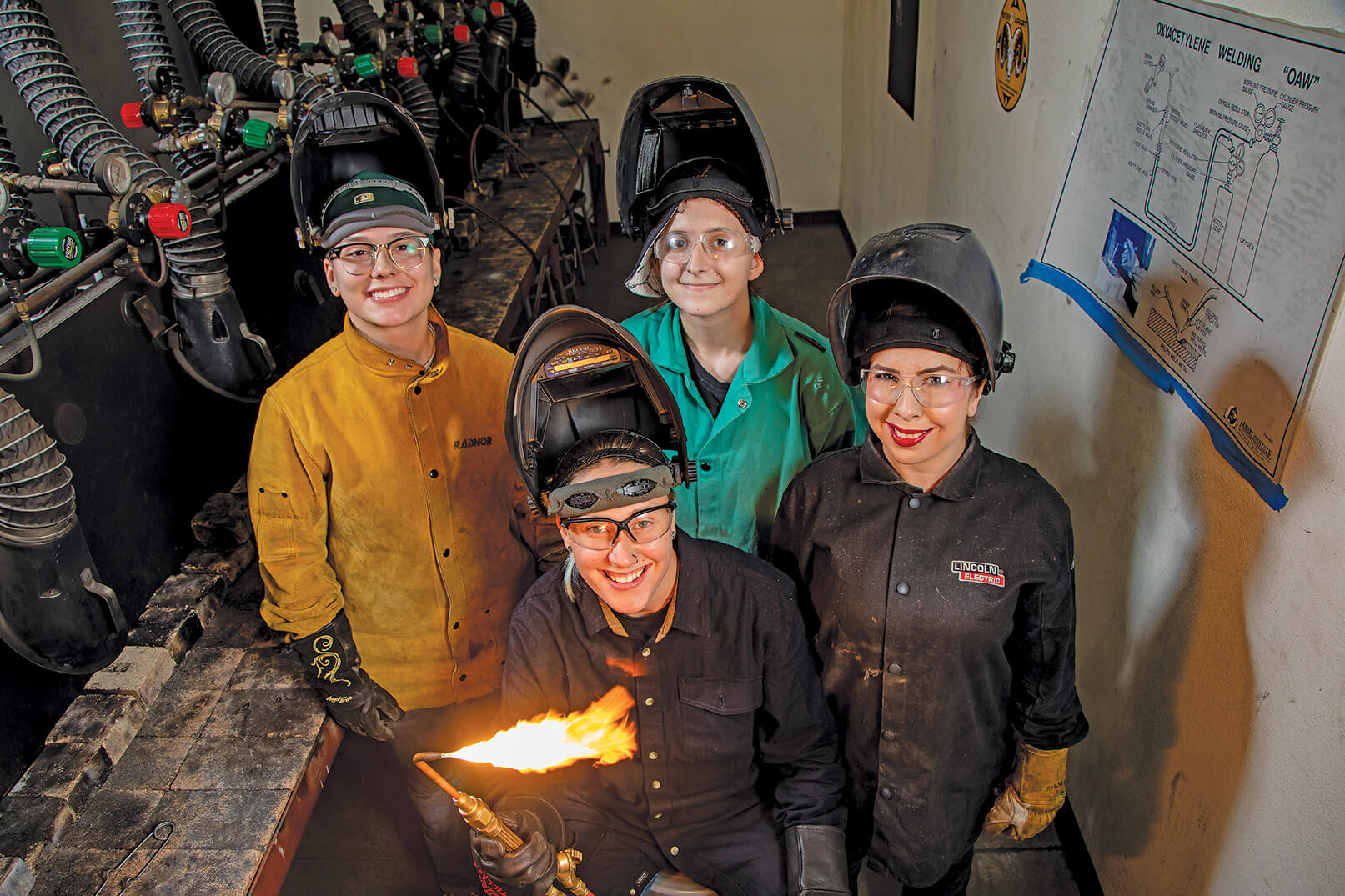
She’s welded to her craft
Perhaps fittingly, given her grant’s heavy-metal roots, she said, “I fell head over heels in love with welding.”
And Beaver is in the perfect place for this new love to flourish.
With its growing number of housing developments, warehouses, bridges, and roads, California is a hotbed of new construction, promising countless opportunities for workers skilled in the building trades. Between May 2021 and May 2022, California was second only to Texas in new construction employment, with 27,800 new jobs, an increase of 3.1 percent.
In the Central Valley alone, 8,000 jobs have been created by the $5 billion project to connect Los Angeles to San Francisco with a bullet train making the 500-mile trip in three hours. Although the ballooning price tag has put much of the project on hold, work continues on a 172-mile segment to connect a few cities in the Central Valley. Along with a boom in warehouse construction, a local study projected $47 billion in infrastructure money coming to the Central Valley over the next 10 years.
For an agricultural region that has struggled economically, that means a steady demand for carpenters, electricians, masons, welders, and more.
But industry experts say too few students and workers are skilled for—or even aware of—California’s numerous construction opportunities. That is the reason for the High Road Recovery Construction Careers, state grants for short-term training programs that prepare students for apprenticeships in the building trades. The program is designed to serve people who are underrepresented in the field, including people of color, the formerly incarcerated, and women.
According to North America’s Building Trades Unions (NABTU), construction apprentices can earn up to 60 percent of full wages for construction professionals while training for these jobs.
Toward that end, California’s community colleges have adopted NABTU’s Multi-craft Core Curriculum, known as the MC3. It includes 166 hours of instruction, including 20 hours of hands-on training. Students attend the program full time for eight weeks, five days a week. Those who complete the program earn an MC3 Certificate—proof to employers that they have the skills to start as an apprentice in any number of construction fields.
The curriculum teaches basic academic and life skills in context with the construction trades. In math classes, for instance, students relearn high school geometry and algebra in a way that shows them how to calculate the area of a floor, the slope of a roof, or the angle for a pipefitting. They familiarize themselves with calipers, protractors, and other tools.
In addition to basic math for construction, students learn to read blueprints, become familiar with tools and materials, and get basic lessons in environmentally sustainable construction and financial literacy. They are also trained in first aid practices, including CPR, and hazardous materials-handling toward a certificate known as the OSHA 10. The certificate is proof from the U.S. Occupational Safety and Health Administration that the student has completed the 10-hour course covering general safety and health hazards for entry-level workers.
In a typical project, the students build a 12- by 12-foot shed from start to finish. They design it (having learned to read blueprints); calculate square footages and angles; lay floors; install windows, fastening, trim and moldings; and hang drywall, sheathing, and exterior siding.
Fresno, San Bernardino, and San Diego are three California counties in which community colleges have embraced the High Road Recovery Construction Careers initiative. Their programs differ slightly, tailored to their particular populations and local workforce needs, but they have the same goals.
The city of San Bernardino, the seat of San Bernardino County, has only recently emerged from bankruptcy and is dealing with a high degree of homelessness, poverty, and crime. So the High Road initiative focuses here on underserved populations—people of color, formerly incarcerated individuals, and residents 18 to 24 years old. It has also set a particular goal of serving women, including the 30 who are among the current group of 101 participants. Women are in such strong demand in the trades that they aren’t required to meet an income threshold to join the pre-apprentice program.
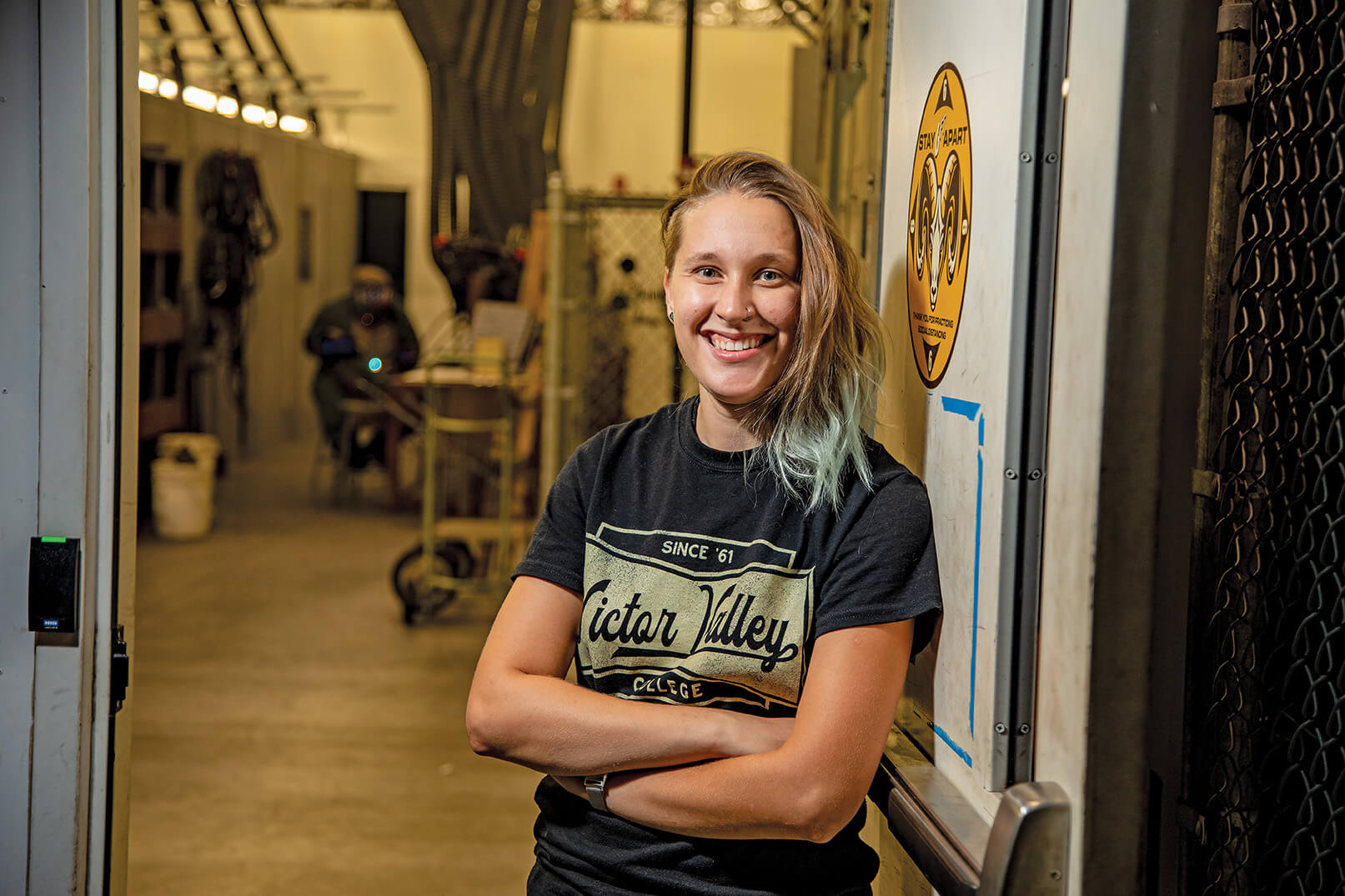
‘We want to empower women’
“We want to get rid of the stigma for women in construction. We want to empower women,” said Stacy Garcia of the San Bernardino Community College District. Added Ashley Matthews of the Fresno Regional Workforce Development Board: “Traditional female employment tends to be on the lower-paying side, but in this industry, whether you are male or female, it doesn’t matter. If you are a journeyperson, you are making prevailing wage. And we want women to have access to these good-paying jobs that can support a family.”
Now living near Victorville in San Bernardino County, Cat Beaver is a rarity in the construction field—welding in particular. Of 80 to 100 people in her welding classes at Victor Valley College, she says she can count the number of women on one hand. She’s had few real difficulties with the male students, saying: “We are all here to learn.” But “the women are absolutely united,” she said. “We have each other’s backs. They are the kinds of tough women we need.”
In the second half of her coursework at Victor Valley, Beaver is becoming increasingly proficient in handling a welding torch. An inherently dangerous enterprise, welding requires great precision and extreme patience, and Beaver admits it took her a while to develop the latter. “The first class I took was so frustrating,” she recalled. “It is so hard. You are looking at a single focal point, and there are dozens of variants and so much precision. You have to do the same thing over and over hundreds of times to get it right.”
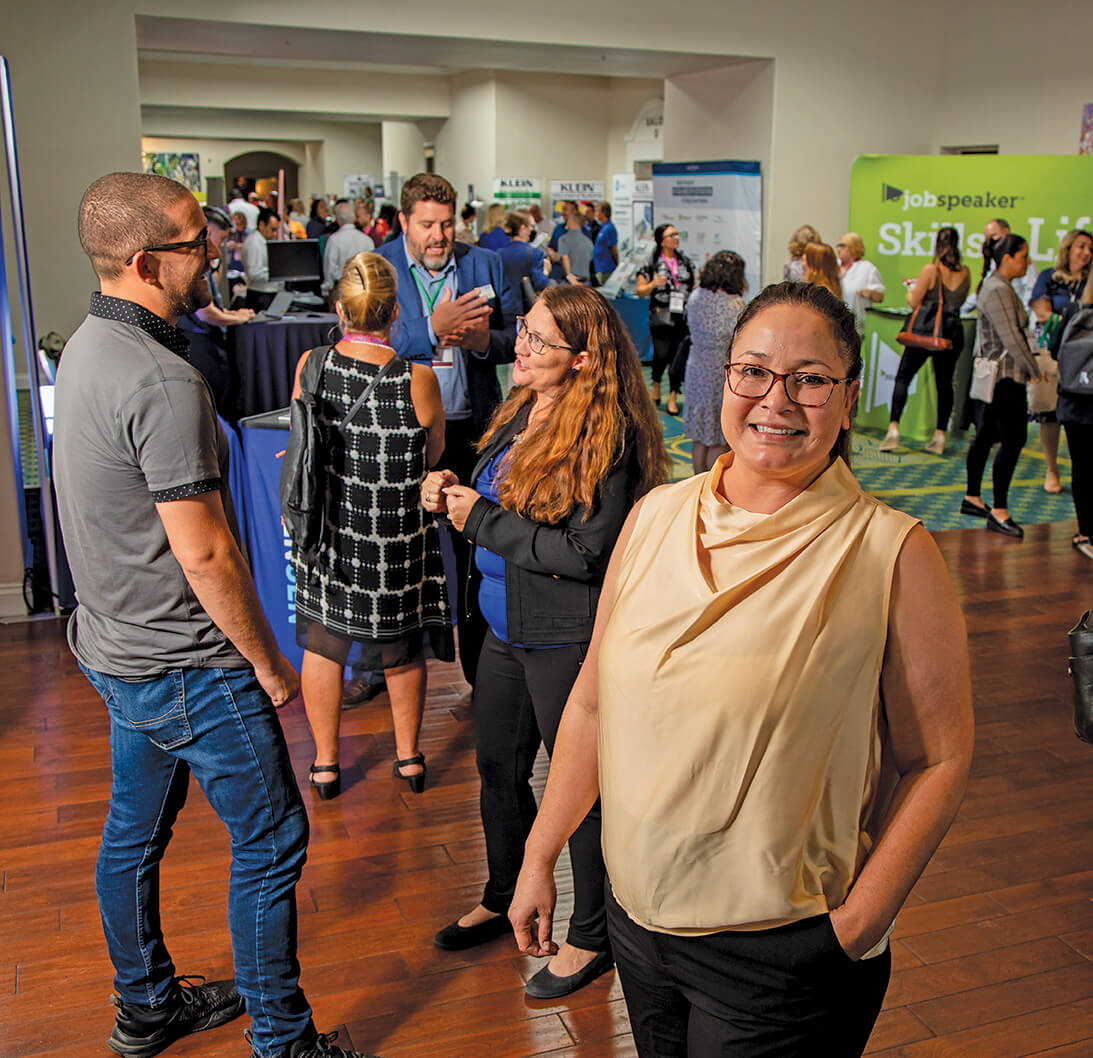
Women do have some handicaps in the field, one of them being arm strength. Strong limbs are essential when the welding torch must be held aloft—as in doing ironwork on a multi-story building. That kind of work also requires a strong constitution. “You can be 12 stories in the air, and that takes a special heart,” Beaver said. “You have to get into some physically difficult body positions. You are in a harness, but if you fall, you’re just dangling.”
Undaunted, Beaver is anxious to perform this sort of work, so she routinely lifts weights.
Although the grant pays her full tuition, it doesn’t cover equipment, an expense that welders can’t skimp on. “You are getting burned a lot,” she said matter-of-factly. Dealing with that hazard means shelling out $300 for a full-face helmet, $200 for a protective leather jacket, and at least $100 on other tools. No matter, Beaver said. “I have always loved fire and seeing how the iron gets hot and how you can bend it.”
Whatever obstacles she’s faced, Beaver has avoided one that confronts many other program participants—particularly those in the Fresno area: the language barrier. There, many of the preparatory math and English courses are taught much like English as a Second Language. That’s because the region has a large Hispanic and immigrant population, and language has often been a barrier to passing union exams.
“We want to prepare them and give them the best chance possible,” said Ashley Matthews of the Fresno Regional Workforce Development Board. “These are great jobs, and we want to help people get into them.”
After taking the math and English courses (taught in context) for nine weeks online, students move on to the Multi-Craft Core curriculum (MC3), which they pursue full time. Some of these students may be receiving unemployment benefits, others may be working part time, but those with no income may get a need-based hourly wage as they train.
Language isn’t the only barrier to earning a certificate, of course. That’s why students in Fresno can also get child care referrals, reimbursement for gas and other transportation expenses. They also can get referrals for legal services through the Clean Slate program, which helps restore driving licenses suspended for fines that students couldn’t afford to pay.
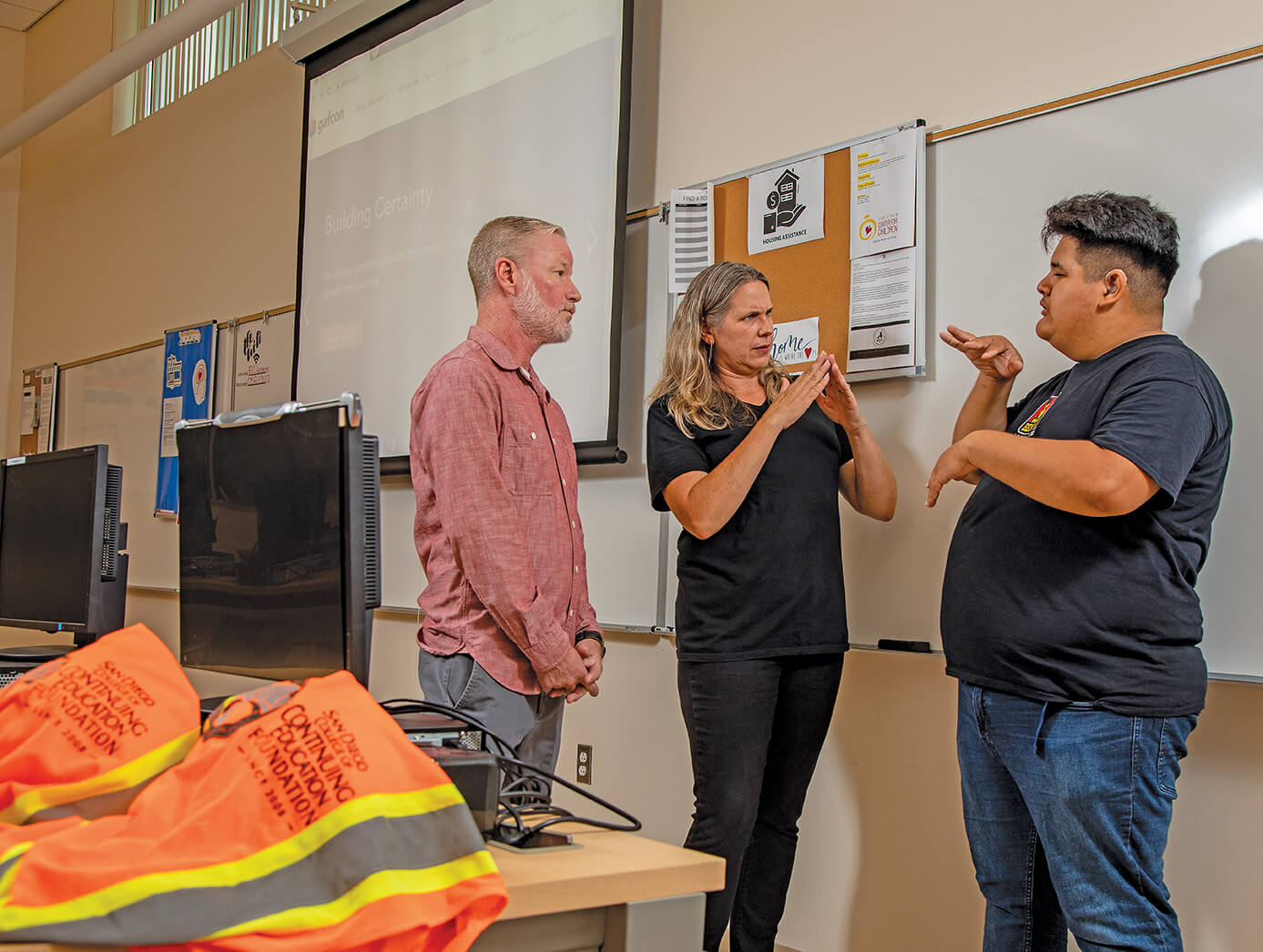
Getting physical
The pre-apprenticeship program even helps it students get into shape. “We offer physical training throughout the program so they can be in good condition for work,” Matthews said. “The number one reason someone dropped out of that first-year apprenticeship is due to the physicality.”
Although the construction careers program is deeply centered on student success, the colleges stop short of guaranteeing completers a job. “We don’t do that because construction work is not for everyone,” Garcia pointed out. “People may go through the program and discover that maybe it wasn’t the right industry for them.
“But we always want our participants to know that this program is going to work as hard for you as you do for it,” she added. “We are out there helping them find jobs, helping get that resumé written, improve their interview skills. While it’s never a guarantee, if they put in the work, it’s highly likely they will find a good-paying job.”
A.J. Garcia of San Diego is one trainee who is confident of landing one of those jobs—perhaps because he’s faced far more challenges in his 19 years than most. Deaf since birth, he struggled in an educational system ill-equipped to serve him, and dropped out before earning his high school diploma. With American Sign Language as his native tongue, he still struggles with reading and writing in English.
But at the Educational Cultural Complex of the San Diego College of Continuing Education, Garcia is back on an educational track, thanks to free tuition from the High Road program, wraparound support, fluent interpreters, and a passion for the building trades. He hopes later to earn his GED.
“I was weighing my options, and a friend made me aware of construction careers,” Garcia said through an interpreter. “I was really enamored with the construction field. I loved the opportunity of being able to afford a home and to be able to take care of it.”
The ability to care for a home is hardly something Garcia takes for granted. His own family of five immigrated to the U.S. from Mexico. His father had graduated from high school in that country, and his mother had no high school diploma. They struggled financially. “We didn’t have the money for home repairs,” Garcia recalled. “But if you can fix it yourself…”
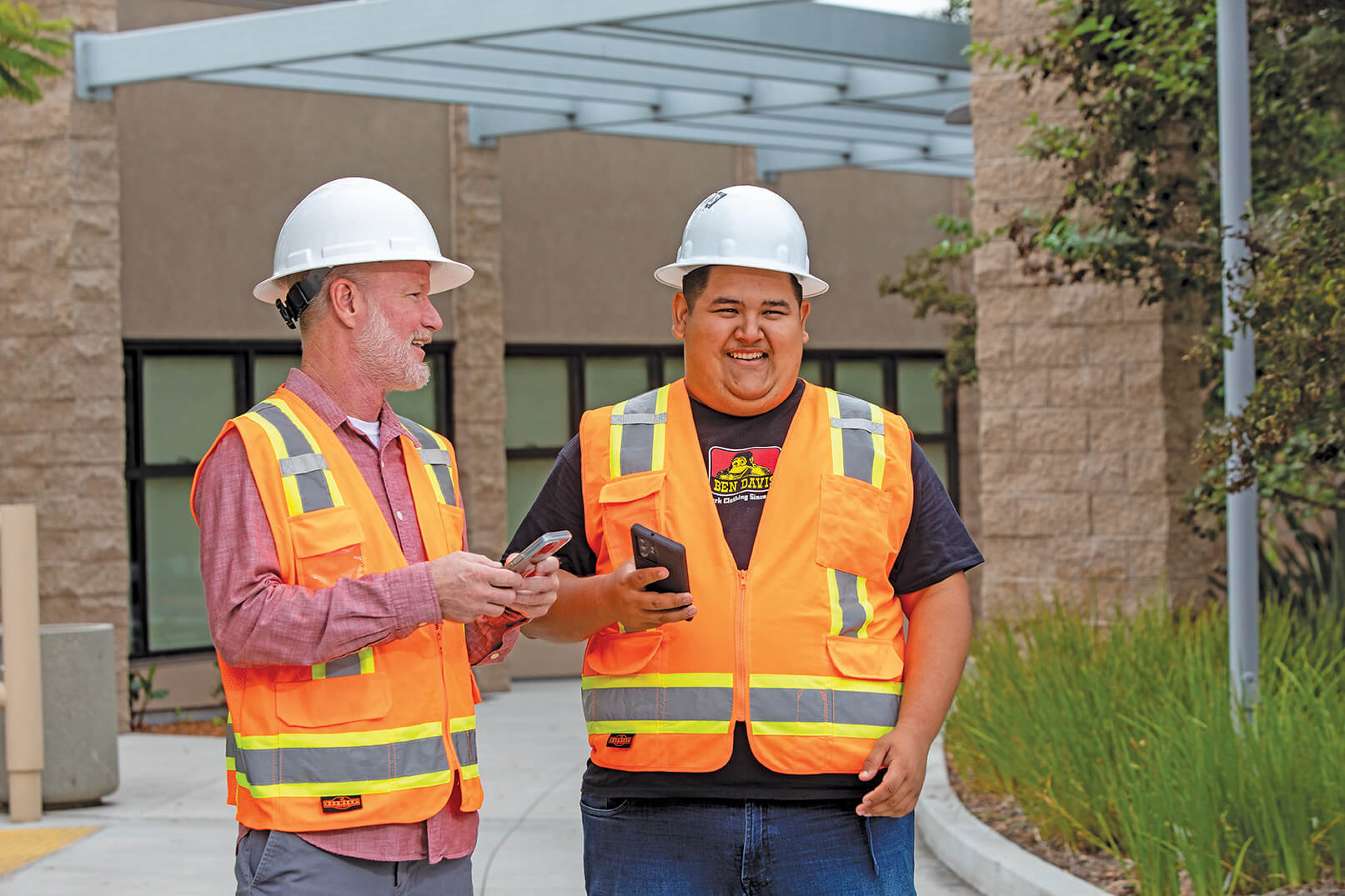
At the beginning of the program, “I felt isolated and frustrated,” Garcia admitted. “There were money issues and family issues. But then I started to learn new things, and I felt invigorated.”
Garcia attends the MC3 pre-apprentice program at the San Diego complex full time—three days a week in person, two days online. “We learn about construction safety, materials, measurement, and tools. There are a lot of guest speakers and field trips. We go to construction sites and watch them work and hear them explain what they are doing. They show us the ropes.”
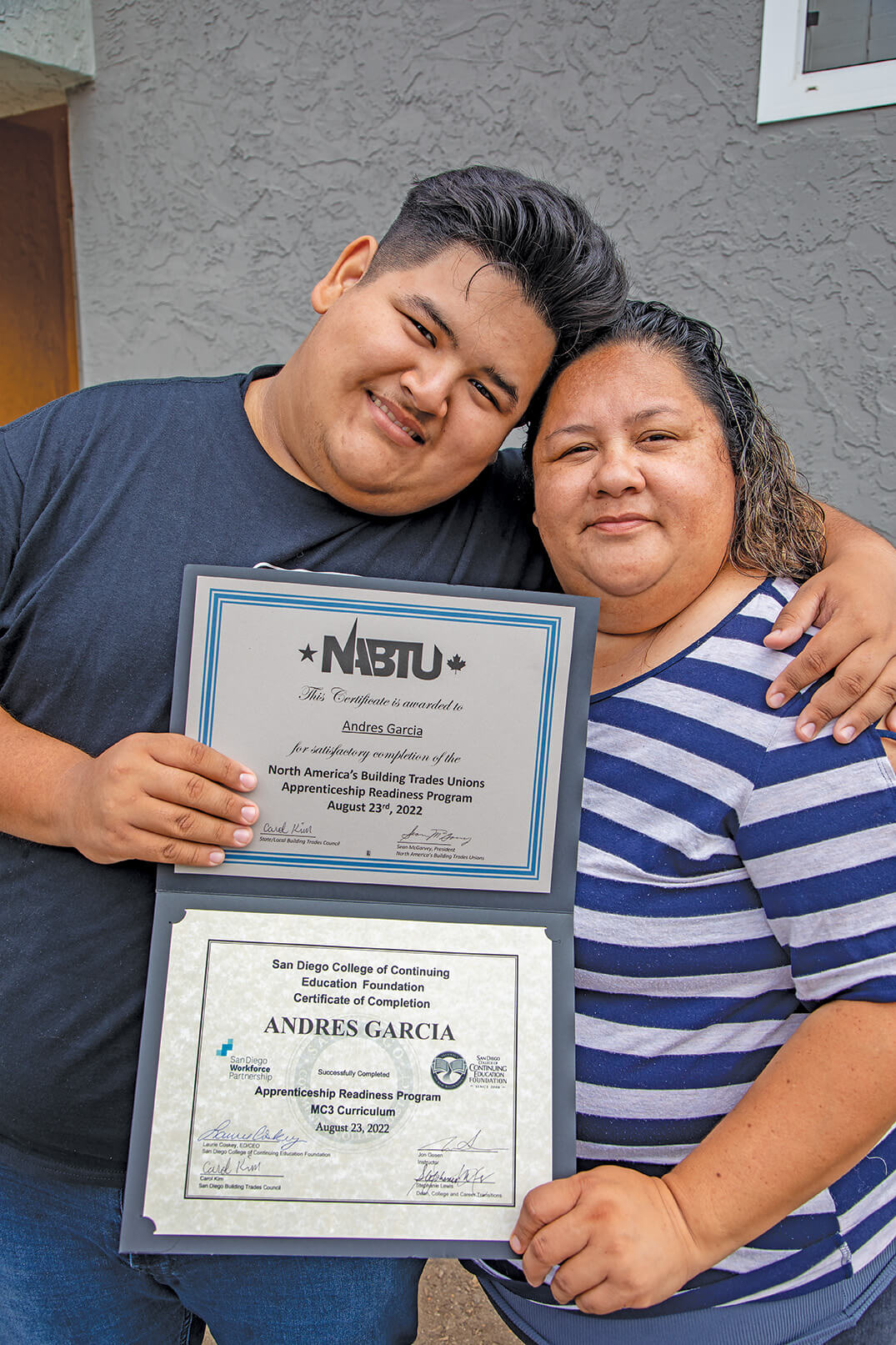
The class recently visited a building site with members of the Southwest Regional Council of Carpenters. “That was really interesting, and I learned a lot,” Garcia said. “We asked a lot of questions—like about math and wages in different states. We learned different techniques with hammers.” He added: “I really, really love carpentry.”
Garcia, who attends classes with an interpreter provided by the college, is the only deaf person in his program. But, he says, “I have great rapport with the others. I’ve made a lot of new friends.” He said he’s faced no more than the usual communication challenges. On the job, lacking an interpreter, he gestures, writes notes by hand, and types out messages on his phone. “We deaf people get by just fine,” he insisted.
Garcia’s tuition is paid in full through the High Road initiative, and because he is attending full time, he earns a small stipend as well. “I get paid while I am learning,” he said. “It’s so great!”
In August, Garcia completed the pre-apprentice program and earned an NABTU Apprentice Readiness Certificate, which shows he has the skills to take on an apprenticeship in any of several building trades.
Having learned the basics and saved his money, he now says: “I’m ready to get to work. I have done a lot of networking and collected a lot of business cards. We’ll see where the wind takes me.”
In Victorville, meanwhile, Beaver is feeling similarly upbeat. The welding program has helped her make some valuable job contacts. A favorite instructor suggested she apply for an internship at the Armstrong Flight Research Center at Edwards Air Force Base, with which he is affiliated. “I’m applying, and I’m hoping this could happen next summer,” she said. “But if I don’t get it, I’ll try again. I have the confidence and the contacts, and I am not stopping.”
